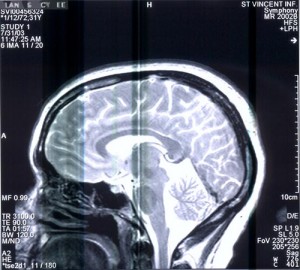 Traumatic Brain Injury (TBI) can affect different parts of the brain, often dependent upon the location where the injuring force was concentrated, but sometimes affecting many areas of the brain. The location of damage within the brain will have a strong influence on the type of disability experienced. The brain is made of the cerebral cortex, brain stem, and cerebellum. Each has a distinct function, but they all interrelate to function as a whole.
Traumatic Brain Injury (TBI) can affect different parts of the brain, often dependent upon the location where the injuring force was concentrated, but sometimes affecting many areas of the brain. The location of damage within the brain will have a strong influence on the type of disability experienced. The brain is made of the cerebral cortex, brain stem, and cerebellum. Each has a distinct function, but they all interrelate to function as a whole.
Cerebral Cortex
The cerebral cortex is the largest section of the brain. It includes four different lobes-types called the frontal, the parietal, the occipital and the temporal. The frontal lobe is so called because it sits at the front outer part of the brain. The parietal lobe is centrally located at the top of the brain. The occipital lobe is at the center back of the brain and the temporal lobes are located on either side. Injuries to the different lobes can have different affects on brain functioning.
Injuries to the frontal lobe can interfere with reasoning, decision making, problem solving, emotions and behaviors. Patients’ behavior can become riskier and more impulsive. Attention deficits and memory problems are common.
The parietal lobe injuries can cause various deficits with the individual’s perception of body, surrounding space, and objects within the space. There may also be problems with writing, mathematics and language.
Damage to the occipital lobe affects vision and can cause individuals to see objects with a lack of color or with abnormal colors. They may be unable to read words or determine the size of an object from looking at it.
Temporal injuries interfere with hearing abilities and some types of visual perception. Patients may have difficulty recognizing the faces of loved ones. They may behave aggressively and be unable to interpret some of the words they hear. Memory and categorization problems are also common.
Brain Stem
The brain stem resides deep within the brain and leads to the spinal cord. The neurological functions of the brain stem are necessary to survival, so the effects of brain stem injury can be devastating. Severe injuries limit mental functioning and may produce a prolonged coma or vegetative state. Problems with breathing, swallowing and balance may occur and sleep systems are usually affected. Since the brain stem controls basic body functions, a critical injury to the brain stem can cause sudden cardiac or respiratory arrest.
Cerebellum
The cerebellum is located directly above the brain stem. When this area is injured, coordination of motor movements becomes impaired, sometimes taking a person’s ability to walk. There may also be a decreased capacity for judging distances, interfering with navigating spaces or picking up objects. Slurred speech and abnormal eye movements are common as well.
If someone you love experiences some of these symptoms because of a serious brain injury, please contact our office for a free consultation. If we find someone was negligent in contributing to the injury, we can help you file a claim for damages that will help cover the medical care expenses.


